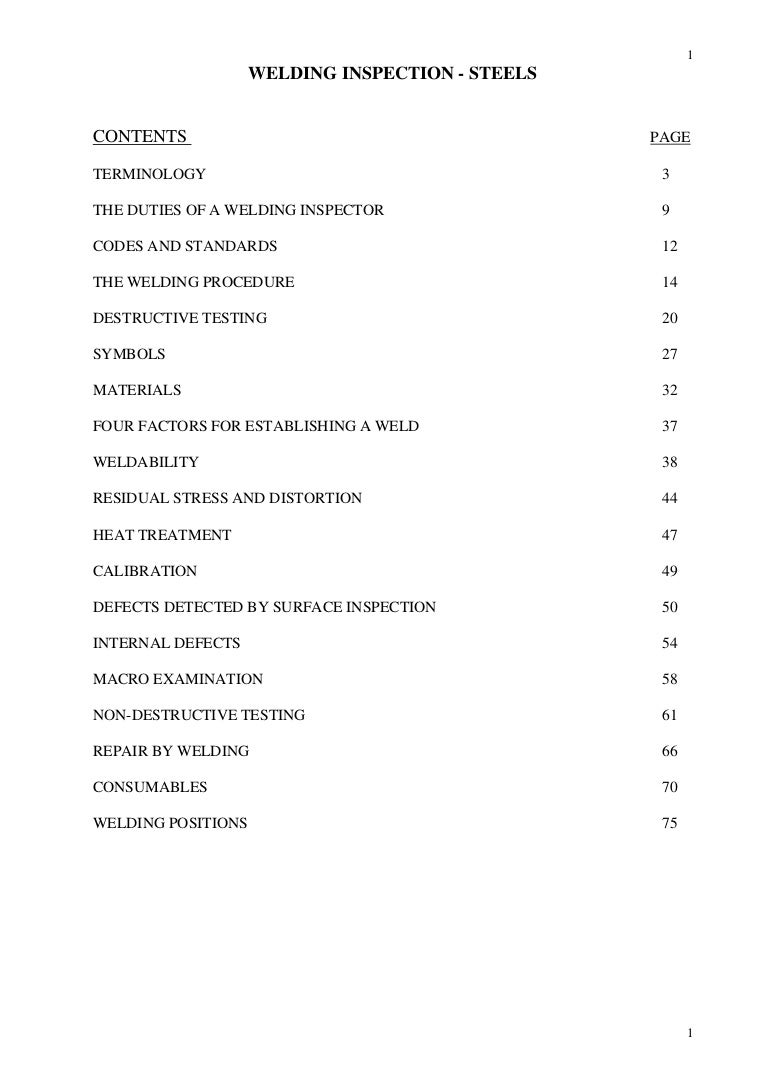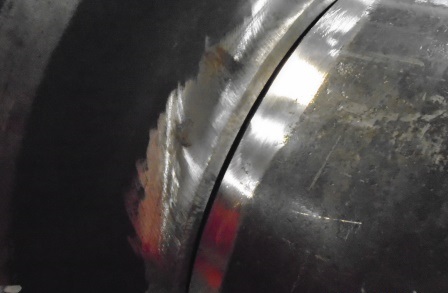The Main Principles Of Welding Inspection
Table of ContentsThe Basic Principles Of Welding Inspection The 8-Second Trick For Welding Inspection9 Simple Techniques For Welding InspectionThe Facts About Welding Inspection UncoveredMore About Welding Inspection
This technique is performed in a workshop or area while the welding is being done. Things that are visually inspected include the welder's certification, slag removal, joint preparation, weather problems, existing used, as well as problem of the electrode. 2- Magnetic Bit Testing This examination is used to locate any kind of surface or hardly subsurface problems in a weld.Fragments of iron are after that related to the magnetic field and also if there are any type of flaws, the fragments of decision build up around the issue, which reveals where the problem is and why it took place. 3 Liquid-Penetrant Examining This test will detect issues in the surface of the weld like porosity and also hairline cracks.
A designer is after that used that will certainly reveal if any kind of defects show up. 4 Ultrasonic Examining This test is completed by the use audio vibrations, which are then transmitted with the welded joint. The signals received on a glass screen will figure out if there are any type of problems in the joint of the weld.
5 Eddy Current Testing This examination will certainly show very little fractures and is accomplished by the usage of a round coil that lugs alternating currents, which is positioned near the weld. The alternating currents will produce an electromagnetic field, which will interact with the weld and subsequently, create an eddy present.
Welding Inspection Fundamentals Explained
The resulting impression size is referred to as a hardness measuring table. 8 Damaging Checking This test is a devastating examination that is accomplished by cutting the completed weld into pieces, this is per the code for origin bend, face bend, tensile examination, and side bend. It is used to locate slag addition, porosity, as well as undercutting problems in welds and is very effective.
It's also not useful for a person who is not skilled in the required procedures to do this task. Examination of weld features consists of the dimension of the weld as well as the visibility of interruptions. The size of a weld can be incredibly crucial, as it usually associates directly to stamina and associated efficiency - Welding Inspection.
Revealing weld interruptions likewise is crucial due to the fact that blemishes within or nearby the weld, depending upon their size or area, might avoid the weld from meeting its intended feature. When interruptions are an undesirable size or in an unacceptable area, they are called welding flaws, as well as they can cause early weld failing by reducing toughness or creating tension focus within the bonded component.
It is important to pick a welding conventional intended for usage within the particular market or application in which you are included. Weld Inspector Responsibilities Welding assessment requires an expertise of weld drawings, icons, joint style, treatments, code as well as basic needs, as well as inspection as well as testing strategies. Because of this, many welding codes as well as criteria need that the welding assessor be formally certified, or have the required understanding and also experience to conduct the assessment.
Welding Inspection Can Be Fun For Anyone
Below are a few things that a welding inspector must recognize and also tasks he must have the ability to execute: Particular procedures have to be complied with to qualify welders and welding procedures. The credentials procedure is an essential component of the overall welding high quality system, and also the welding assessor frequently is required to work with and verify these kinds of qualification tests.
These bonded examples normally are needed to be evaluated after completion. Radiographic, microetching, directed bends, transverse tension, and also nick-break crack are a few of the tests that are made use of. The examination results need to satisfy or surpass the minimum requirements as specified in the welding code or requirement before the treatment can be certified.
The welding examiner should be capable of recognizing all of the different welding discontinuities throughout visual inspection. Welding Inspection. He also has to be able to evaluate, in regards to the relevant welding code or criterion, the importance of identified stoppages to figure out whether to accept or deny them during screening and manufacturing.
A welding examiner sometimes is called for to conduct weld screening by surface area crack detection techniques. In addition, he must understand just how the examinations are utilized and what they will discover.
5 Simple Techniques For Welding Inspection
These inspection methods are made use of to examine the internal structure of the weld to establish the weld's stability, without damaging the bonded element. The welding examiner may be needed to understand this sort of testing and be proficient in the interpretation of the results. Radiographic and ultrasonic weld evaluation are both most common methods of NDT used to detect gaps within the internal structure of welds.
Radiographic testing uses X-rays generated by an X-ray tube or gamma rays generated by a contaminated isotope. The fundamental concept of radiographic evaluation coincides as that for medical radiography. Penetrating radiation is gone through a solid things, in this instance a weld, onto a photographic film, causing a picture of the things's interior structure.
Energy not soaked up by the things will trigger direct exposure of the radiographic movie. These areas will be dark when the film is developed. Areas of the film exposed to much less click now power remain lighter. Flaws within or nearby the weld may protect against the weld from satisfying its intended feature. As a result, areas of the weld where the density has been transformed by stoppages, such as porosity or fractures, will show up as dark outlines on the movie.
A light beam of ultrasonic power is directed into the weld to be checked. This light beam travels with the weld with irrelevant loss, other than when it is intercepted and also reflected by a discontinuity.
Not known Factual Statements About Welding Inspection


Some of these tests are the assisted bend test, macroetch examination, reduced section tensile examination, fracture examination, and Charpy V-notch effect examination. These tests are made use of during welding treatment or welder efficiency certification screening. The welding inspector often is needed to conduct, oversee, or evaluate these testing approaches. The welding inspector need to be experienced in the ability to review design as well as production illustrations, and be able to interpret all details as well as icons that supply information regarding the welding demands.
If you have little or no previous welding experience we advise that you attend the CSWIP Visual Welding Examiner as it will assist you plan for future presence to the CSWIP Welding Examiner program. The CSWIP Welding Assessor training course is designed for assessment designers and supervisory personnel. If you call for discover this info here some sensible welding knowledge to help enhance your understanding of the assessment of bonded items, please take into consideration the CSWIP 3. You have to hold this level for a minimum of 2 years prior to relocating to the next level. You have to hold the CSWIP welding inspector level for a minimum of two years prior to relocating to the following degree. Detailed info is offered in the CSWIP record. It involves the analysis of a minimum of 6 radiographs, densometry analyses, sensitivity calculations as well as a 20 inquiry multi-choice paper on radiography concept.